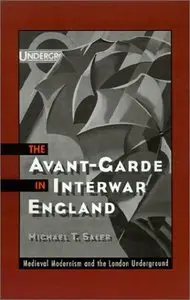The Avant-Garde in Interwar England: Medieval Modernism and the London Underground by Michael T. Saler
English | May 24, 2001 | ISBN-10: 0195147189 | 256 pages | PDF | 5,8 Mb
English | May 24, 2001 | ISBN-10: 0195147189 | 256 pages | PDF | 5,8 Mb
The Avant-Garde in Interwar England addresses modernism's ties to tradition, commerce, nationalism, and spirituality through an analysis of the assimilation of visual modernism in England between 1910 and 1939. During this period, a debate raged across the nation concerning the purpose of art in society.
On one side were the aesthetic formalists, led by members of London's Bloomsbury Group, who thought art was autonomous from everyday life. On the other were England's so-called medieval modernists, many of them from the provincial North, who maintained that art had direct social functions and moral consequences. As Michael T. Saler demonstrates in this fascinating volume, the heated exchange between these two camps would ultimately set the terms for how modern art was perceived by the British public.
Histories of English modernism have usually emphasized the seminal role played by the Bloomsbury Group in introducing, celebrating, and defining modernism, but Saler's study instead argues that, during the watershed years between the World Wars, modern art was most often understood in the terms laid out by the medieval modernists. As the name implies, these artists and intellectuals closely associated modernism with the art of the Middle Ages, building on the ideas of John Ruskin, William Morris, and other nineteenth-century romantic medievalists. In their view, modernism was a spiritual, national, and economic movement, a new and different artistic sensibility that was destined to revitalize England's culture as well as its commercial exports when applied to advertising and industrial design.



